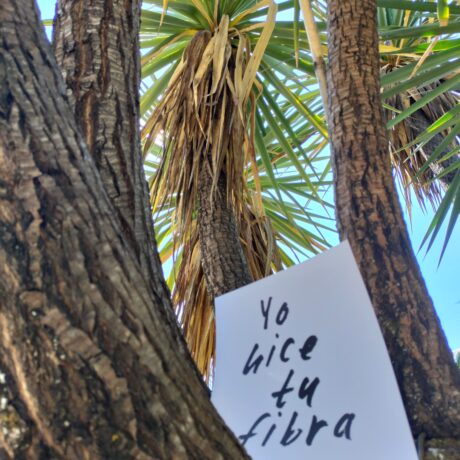Lessons we learned from Fashion Open Studio 2020
Covid-19 was not going to come in the way of Fashion Open Studio 2020 and its audience. If anything, the pandemic gave this year’s designers a greater audience than ever. The studio tours, workshops and conversations were pivoted to a digital format, allowing us to #StayHome while also staying connected with the creative community making use of this time to rethink systems, supply chains and resources.
Sustainability means many things
We celebrated the work of 53 designers across 14 countries including Iran, New Zealand, Vietnam, Nigeria, Zimbabwe, Switzerland and Germany. There was so much to learn from the designers who took part, each one with solutions to the challenges most pressing to them. At Fashion Open Studio we understand that sustainability means many things (and sometimes, nothing at all). Every designer taking part in this programme is finding solutions that will help to move their own business forward without over stretching the planet’s resources and with respect for artisans and garment workers who craft and stitch their collections. The purpose of Fashion Open Studio is to share these stories and help them to reach the audiences they deserve.
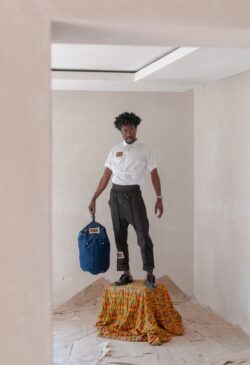
From Fashion Revolution’s incredible global network there were so many eloquent voices, with as many different perspectives on how clothing should be made and valued. From Zimbabwe, Fashion Revolution’s country coordinator Rudo Nondo talked to Julian Tamuka about his brand Guyllelujah. Julian had previously not considered ideas about sustainability until he was introduced to Fashion Revolution through Fashion Open Studio and realised his use of limited resources – deadstock materials and off cuts – and his philosophy of making staple items of clothing because as he says “it’s a staple for a reason, it’s more likely to be of value and stick around longer,” is the way he works out of necessity.
I recommend everyone watches his short video, The New Philosophy of Fashion as there is so much to learn from his approach.
Likewise, from Harare, Haus of Stone presented Therapy of Fashion, which combined mediation and making one session of mindfulness and creativity. The brand’s founder, Danayi, led us through a fusion of yoga; traditional mbira music and hand sewing. Participants are invited to send the roses they make in the workshop to become part of a collective scarf called ‘Hope’.
View this post on Instagram
In Switzerland in collaboration with Mode Suisse, Rafael Kouto asked “What is Upcycling? And what is waste?” Rafael showed how to ‘pimp’ your garments with an introduction on his upcycling practice and so much information and advice on rethinking and valuing the contents of your own wardrobe. It’s a really wonderful and informative session.
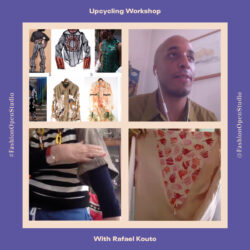
From Pune in India, Karishma Shahani Khan invited small groups into a virtual studio each day to learn quilting, embroidery and hand sewing techniques in a series of sewing circles with the team from Ka Sha and the artisans they work with. They wanted to share the inherent social setting of storytelling and conversations that they witness within their everyday working environment with guests.
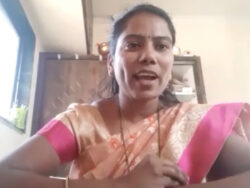
Also in India, in Jaipura in Rajasthan, Iro-Iro showed their practice around implementing zero-waste for their MoonWash collection, focusing on New Heroes with illustrations and readings celebrating women throughout history who have been independent thinkers and doers.
If you missed these remarkable stories, they are still available as a series of readings of letters to women from Cleopatra to the spy princess Noor Inayat Khan, and there is a collection of clothes inspired by each of them.
Vietnamese brand Tamay & Me introduced Mien artisan and co-founder Tamay from Ta Phin village in Sapa,
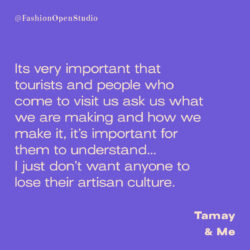
with a special film screening followed by a Q&A with her co-founder Hannah Cowie to explain how they work together and the heritage of the unique craftsmanship that goes into every garment.
Creativity in lockdown thrived
While the world was in lockdown, many designers still had access to their studios, either because they live in the same space, or because they were using them to continue working at a safe social distance in the essential work of making PPE and hospital scrubs as many of the Fashion Open Studio network were doing. Phoebe English talked to us from her Deptford Creek studio in south London, explaining how to quilt with waste using her paper templates.
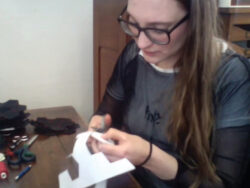
As she spoke, the scrubs she had been making were being counted and packed up ready to be delivered to hospitals in need as part of the Emergency Designer Network with fellow FOS designer Bethany Williams. Elliss Solomon, founder of Elliss, took time out from her work for Scrub Up for the NHS to talk us through her workshop on collage – a key part of her creative development when she is designing a collection. Many others taking part in the week were playing their part in making masks, scrubs and PPE and of course, the week’s events were a great way for people to spread the word, stay connected, and share the challenges of trying to keep business going.
Collaboration makes sense
While there are designers who are still fledgling brands, this is a particularly difficult time for those newly graduated. Among the thousands of fashion graduates unable to even show their final collections as part of a degree show, we showcased the work of two emerging talents who had shown their collections as part of the Central Saint Martins MA show in March, just a week before the lockdown. The portfolio visits traditionally held for industry experts to head hunt talent, were cancelled, with future job prospects on hold for many. Matthew Needham, who temporarily joined the Fashion Revolution team for the week to help on production and Zoom management, talked us through his final collection ØYEBLIKK / 2020 ‘IN THE BLINK OF AN EYE’.
View this post on Instagram
While Needham is an advocate of waste management – a master of using trash as a precious resource in his collections – he is also becoming expert in collaboration, and is sure that this is the way forward. For his session, he brought together his co-collaborators Sneaker artist Helen Kirkum, Biotech materials researcher Alice Potts and experimental milliner Jo Miller. Together they explained some of their processes and how working collectively is a great way to consolidate sustainable thinking, encourage innovation and help lift each other’s practice and find new audiences.
Somerset House x Young Creatives
Fellow CSM MA graduate Paolo Carzana moved back to his hometown in Cardiff, Wales, the week he was supposed to be showing his final collection to the world. Paolo was chosen as the finale to the degree show, with The Boy Who Came Back to Life, a collection packed with details, extraordinary materials, botanical dyes, Pinatex textiles, and layers of story-telling, autobiographical notes, and months’ worth of research.
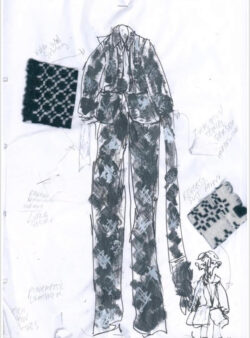
For his session which was part of the afternoon of events in partnership with Somerset House and its Young Creatives programme, Carzana talked from the balcony of his flat overlooking the Cardiff stadium which was at the time, being turned into a Nightingale hospital. He had made a special film, A Self Isolation Waltz for the event showing his collection against the backdrop of the building site below, and talked through his sketches, fabric swatches and references. He also talked about his plans to make a capsule collection for the planned digital London Fashion Week in June, re-using pieces from his previous work. The pandemic has forced him to rethink how he is going to work and sell – and be even more resourceful creative and sustainable as a business going forward.
Also taking part in the Somerset House programme were Bethany Williams, Katie Jones and Congregation Design. Bethany was part of a week-long series of events to celebrate the anniversary of Earth Day, planned with Somerset House long before the pandemic took hold. You can watch highlights of the day here.
There is so much to learn from the 2020 Fashion Open Studio designers. We are still absorbing and catching up with so many incredible and diverse sessions. The digital programme allowed these small, intimate studio conversations and workshops to be viewed by a global audience creating conversations that reverberated between designers and communities that hadn’t previously connected.
We are starting to plan for Fashion Open Studio 2021 and will be announcing how to apply to take part in the coming months. Until then, do spend some time watching the videos on our YouTube playlist and share the knowledge and the work of these change maker designers far and wide.
To stay up to date with Fashion Open Studio, subscribe to the Fashion Revolution youtube channel and follow Fashion Open Studio on instagram, twitter and facebook.






